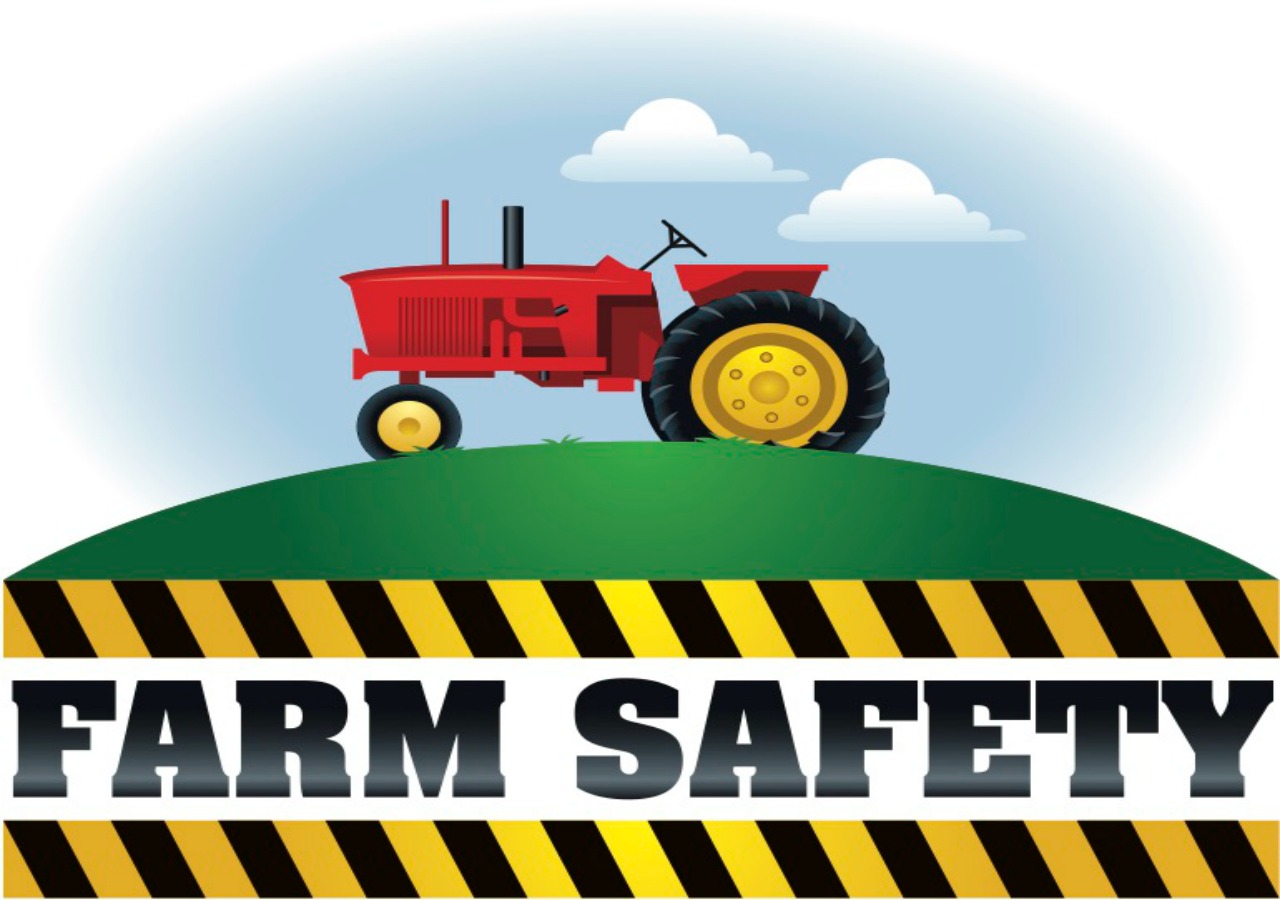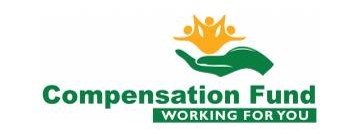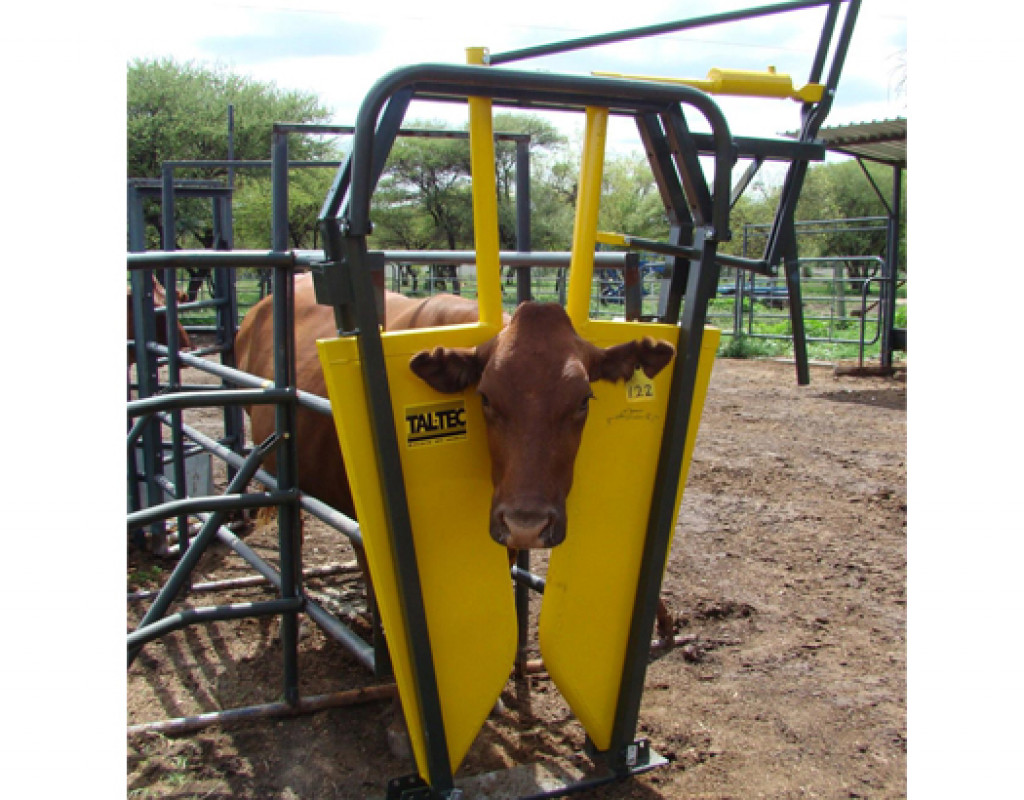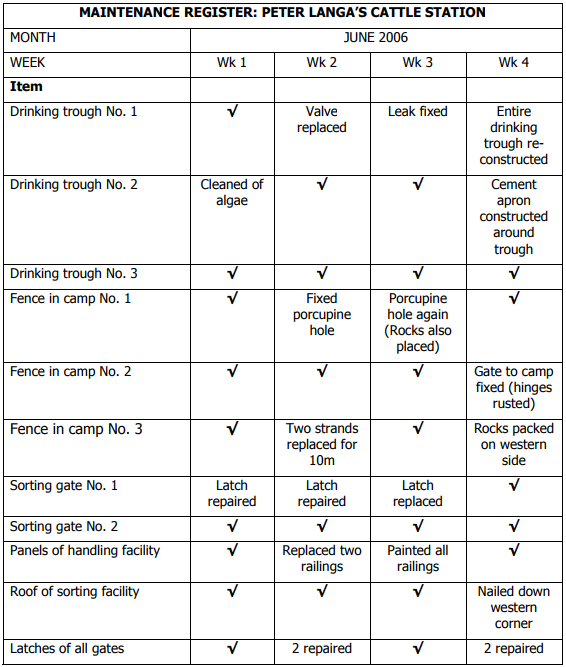All production units must be emergency ready. By being well prepared with emergency plans and equipment you will ensure that damage is minimised when accidents happen. To be able to achieve a clear safety record it is necessary to ensure that there are written “Health and Safety Regulations” in place, that the regulations are effective and that all employees are familiar with the regulations. Regular opportunities should be allowed for this information to be refreshed in the minds of the employees and the regulations should be put up on display somewhere in the workplace.
These regulations should include the following:
- Where the First Aid Kit is kept?
- Location of telephones and emergency numbers.
- Who the Health and Safety officers are and how to contact them (At least one person should be trained in first aid)?
- Who to contact in case of a medical emergency (both human and animal)?
- Who to contact in case a dangerous animal has escaped into a public space?
- Which level of worker is allowed to work with what category of animal under what circumstances?
- What protective wear is expected to be used under what circumstances?
- Who is allowed to administer sedative drugs to animals, where they are kept and how they should be administered?
- If bio-security (public protection from contamination with animal pathogens) is relevant, procedures to apply Bio-security should be listed.
Because of the potential danger of working with animals and equipment, all employers are obliged by law to pay a levy to the Commissioner of Workman's Compensation. These funds are then available to assist with the medical attention needed by a worker should he or she has an accident or is injured in the workplace. As an employee you are entitled to be re-assured that your employer is paying the levy.
Developing a “Workplace Health and Safety” System
All workplaces should have documented basic procedures that must be followed when workers are dealing with potentially dangerous animals. These procedures should be put up somewhere on display. These procedures are known as the “Workplace Health and Safety Regulations”.
The Occupational Health and Safety Act (1993) provides general guidelines regarding the Health and Safety regulations that should be in place in any workplace. It is every farmer’s responsibility to make sure that he is aware of and complies with the laws under which he should operate. His activities on farm are subject to such laws and if he does not comply with these laws he may be subjected to prosecution.

Basic Information Regarding Animal Handling Infrastructure
Having access to good handling infrastructure / facilities goes a long way to create a safe environment in which to handle animals. Points to bear in mind when designing and constructing handling facilities are:
- Use strong and durable materials that can withstand heavy and sudden weight, are easy to clean and do not readily splinter.
- Ensure that floor surfaces are suitably rough to prevent slipping of animals and humans.
- Construct handling facilities under cover or in a shady and wind protected area so that workers do not tire too quickly, and animals do not get agitated in extreme weather conditions.
- Fences and gates need to be in a good state.
- Electric fences need to give a good strong signal to be effective - check the volt reading regularly. Avoid chasing animals towards an electric fence. They will ignore the fence and break it.
- Different species need different sizes and shapes of infrastructure.
- All movable parts of the handling facility need to be free-moving (grease or oil joints and hinges from time to time).
- All stables, boxes, crates etc. that are to be used to contain animals, need to be thoroughly checked before they are used. Special attention should be given to sharp objects and loose wires in the handling areas.
For successful beef production, certain facilities are necessary. These facilities must simplify the management of the system and limit labour to the minimum. It must be functional and economical and a safe environment for the animals, as well as a safe working environment for the handlers.

Click here to view a video that explains Taltec systems for cattle handling ease.
Click here to view a video that explains cattle handling safety.
Handling Facilities
In the planning of handling facilities, the objective of the facility must be taken into account. The handling facility for commercial cattle will possibly differ from that of a facility for a stud-farm and definitely from that of a feedlot. In a well-designed handling facility, animals can be gathered safely, sorted and controlled. Depending on the size and type of the facility, there are basically five essential components in a well-designed facility:
- Sorting pens
- Crush passage
- Working area
- Crush pens
- Loading platform
Sorting Pens
Cattle are collected from the field or feeding pens, before being handled. The size of the sorting pens must be as large as the largest group of animals to be handled at a time. Each animal needs approximately 2m² of space in the sorting pen. The shape of a sorting pen depends on the total lay-out of the facility. In feedlots however, provision must be made for a separate recuperation camp. In large feeding pens, a separate infirmary (sickbay) with a crush pen and special facilities will even be necessary.
Crush Pens
Crush pens are used to drive cattle from the sorting pens to the loading platform. It is usually provided with moveable gates, used for leading the cattle into the crush, by making the area behind them smaller. Cattle will move into the crush more effectively if handlers wait until the crush is half filled before they drive in more cattle. This will create enough space for the cattle to follow a leader into the crush. As cattle usually walk along a fence and are inclined to stand in corners, a round crushing corral is usually better than a rectangular one, as it helps with the flow of cattle.
Mobile Crushes
Mobile crushes are generally used for field work where permanent handling facilities are not close to pens, or where it is not viable. It can also be used to treat sick animals in a camp. Mobile crushes can basically be used anywhere in the field next to a fence. Such a crush will obviously have to be easily assembled and transported.

Working Area
The working area is at the end of the crush. This is the area where the animals are handled and can contain the following items:
- Neck clamp
- Body clamp
- Scale
The working area must preferably be provided with a roof and concrete floor. The floor must be made coarse to prevent the animals from slipping. If an earth floor is used, it must be such that it can drain easily and not be trampled into slush - it should therefore be thoroughly compacted. The work area components must be arranged in such a way that the openings and gates are combined, to make access to the cattle possible. A gate that swings open from the side in the direction of the crush in order to block off the crush for other animals, but give access to the rump of the animal, is convenient. A comfortable work area must be provided in front of the animal.

Neck Clamp
A neck clamp is one of the most essential items in the working area and is used to hold the animal in position if work is done on it. Quite a few neck clamps are available on the market, with different opening mechanisms and different neck openings. Guard against delicate neck clamps made from poor materials. The shape of the neck clamp plays a major role in decreasing the vertical movement of the head. The locking mechanism of the neck clap must also have a fine setting. It is advisable to obtain the opinion of other farmers or owners about a certain product on a certain breed, before a neck clap is purchased.
Body Clamp
A body clamp is used for holding the animal firmly in position when working on it. The sides of the clap swing inwards to clamp the body of the animal. Some body clamps are provided with removable side plates for easier access to the animal.
Scales
The current emphasis on standardization and increasing economic pressure contributes to the situation where a high number of livestock have to be weighed several times during their lives. High demands are placed on scale operators and psychological and physical exhaustion gives rise to inaccurate results, rough handling of the animals and mistakes in information collected. Special attention must therefore be given to the choice and placing of a scale to ensure easy and effective handling of animals.
The four basic categories of scales include:
- Spring balance scale
- Hydraulic scale
- Oil bath scale
- Electronic scale
Basic Contents of a First Aid Kit
Annexure (GSR.3) of the Occupational Health and Safety Act (Act 85 or 1993) contains the “Minimum Contents of a First-Aid Box.” According to this Annexure and with additions a well-equipped First Aid Kit should include:
A list of emergency phone numbers, including the police, fire department, ambulance services and poison information.
- Wound cleaner or antiseptic
- Cotton wool for padding
- Sterile Gauze
- Splint wadding
- Sterile gauze swabs
- Forceps
- Scissors
- Safety pins
- 4 Non-woven Triangular Bandages
- 4 roller bandages
- Conform bandage
- Plaster roll
- Anti-allergenic tape
- Plaster strips
- 4 First Aid Dressings
- Lock-on splint
- Disposable Surgical gloves (medium and large)
- 2 CPR mouthpieces
- Eye wash
Safety Equipment and Clothing
Safety equipment and clothing refers to any specialized equipment or clothing worn by farmers and ranchers for protection against health and safety hazards. Safety equipment and clothing is designed to protect many parts of the body.
Safety equipment and clothing does not prevent accidents, but it does prevent or reduce injury and even fatalities when used. Purpose of equipment and clothing help farmers and workers remain safe when working around the many hazards on farms.
- Eye and face
- Hearing
- Respiratory (lung)
- Hand
- Head
- Foot
- Clothing
Eye and face protection - To provide protection during exposure to hazards like flying particles, metal or sparks, liquid chemicals, caustic liquids, light radiation, i.e., welding, lasers.
Hearing protection - To provide protection during exposure to high pitch and loud noise levels.
Respiratory protection - To provide protection from inhalation hazards such as vapors, mists, particulates, pesticides, and gases.
Hand protection - To provide protection during exposure to potential hazards such as sharp objects, abrasive surfaces, temperature extremes, and chemical contact.
Head protection - To provide protection to potential hazards such as falling objects, striking against low-hanging objects, electrical hazards, or chemical application.
Foot protection - To provide protection for situations with the potential of injuries such as falling or rolling objects, chemical or liquid exposures, piercing objects, and where feet are exposed to electrical hazards.
Clothing protection - To provide protection from potential hazards such as entanglement, skin cancer, bodily injury, and pesticide contamination.
An “Incidents Register” and “Maintenance Register”
To ensure that problems do not re-occur continuously without any changes to the operation being made, it is wise to keep an “Incidents Register”. Whenever damage occurs due to defensive animal behaviour or an accident occurs in which a person, an animal or equipment or infrastructure is damaged or hurt, a report should be filled in. This report should include not only all the details of the incident and why it happened and who was involved, but also, how the incident was resolved and what measures were taken to prevent it from happening again. An example of an “Incident Register” is shown below.

Regular Maintenance on Production Unit
Regular maintenance on the production unit will ensure that equipment and facilities are always in good working order and available for use when required. A “Maintenance Register” should include a list of all the infrastructure and equipment on the production unit, allow a column for a date and an area to mark that the piece of equipment has been checked and maintained. The facility manager should decide how often this maintenance should take place. Maintenance should be a regular task on an animal production unit. An example of a “Maintenance Register” is shown below.






